[동아시아포럼] 팬데믹 이후, 경기 회복과 재도약을 위한 일본의 해법
1990년대 버블경제 붕괴 이후 ‘잃어버린 20년’ 코로나 팬데믹 이후 주식시장 등 경기 회복세 최근 인플레이션 우려에도 완화 기조 유지
[동아시아포럼]은 EAST ASIA FORUM에서 전하는 동아시아 정책 동향을 담았습니다. EAST ASIA FORUM은 오스트레일리아 국립대학교(Australia National University) 크로퍼드 공공정책대학(Crawford School of Public Policy) 산하의 공공정책과 관련된 정치, 경제, 비즈니스, 법률, 안보, 국제관계에 대한 연구·분석 플랫폼입니다.
1980년대 버블경제로 호황을 누리던 일본은 1990년대 들어 버블이 붕괴되면서 이후 약 20년간 장기적인 디플레이션과 경기 침체를 경험했다. 이른바 ‘잃어버린 20년’이라 불리는 이 시기 동안 일본 경제는 퇴보했고, 일본의 버블경제는 구조개혁 없이 거시적인 경제 정책에만 의존한 한계를 교훈으로 남겼다.

코로나19 팬데믹 이후, 버블경제 수준으로 주가 급등한 日
현재 일본은 코로나19 팬데믹이 재차 발생할 수 있을 것이란 우려에도 불구하고 경기가 회복세를 보이면서 코로나19 이전 상태로 돌아가고 있다. 지난 5월 일본 정부는 코로나19 감염 분류를 계절성 독감과 동일한 5등급으로 하향 조정했다. 경기가 회복될 조짐을 보이자 도쿄의 주택 가격도 급등하고 있다. 도쿄 증권거래소의 주가도 상승하면서 6월 닛케이 주가는 평균 3만3천엔(약 30만원)으로 버블경제 당시인 1990년 7월 이후 최고치를 기록하기도 했다.
그러나 현재 일본의 주식시장은 버블경제 당시와는 다르다. 러시아-우크라이나 전쟁으로 인해 에너지와 원자재 가격이 상승하면서 인플레이션에 대한 우려가 제기되고 있는 데다, 완화 기조의 통화정책이 이어지면서 주가도 계속해서 상승하고 있다. 이에 일각에서는 현재 일본 주식시장에서 나타나는 주가 급등 현상이 기업의 실적 개선이나 경제 성장에 기반한 것이 아니라 일시적인 버블 현상이라는 주장이 나오고 있다. 물가 상승 등 인플레이션에 대비해 통화정책을 통한 탈출전략을 마련해야 한다는 지적이다.
실제로 현재 일본 경제의 모든 면이 호조를 보이는 것은 아니다. 닛케이신문에 따르면 일본의 상장기업들은 올해 최대 순이익을 기록했지만 자기자본이익률(ROE)은 정체돼 있다. 올해 ROE 전망치는 9%로 전년 대비 0.4%p 감소할 것으로 예상된다. 이같은 우려에도 불구하고 카즈오 우에다 일본은행장은 여전히 통화완화 기조를 유지하고 있으며 공공 재정에 대한 정치적인 압력에도 무계획으로 대응하고 있다.
일본 기업들, 거버넌스 개혁 등 경영 효율 제고 노력
현재 일본의 민간 기업, 특히 대기업들은 경영 효율을 개선하기 위해 적극적으로 거버넌스 개혁을 추진하고 있다. 이들은 투자자와의 협력적이고 건설적인 대화를 확대하는 등 위험 요인을 줄이기 위해 노력하고 있지만 이같은 시도가 기업의 수익성을 즉시 개선하지는 못하고 있다.
지금 세계 경제는 불안정성, 불확실성, 복잡성, 그리고 모호성이 공존하는 시기를 지나고 있다. 그런 만큼 현재 일본 주식시장의 호황이 일본 기업들의 진정한 회복과 실적 개선으로 이어지기 위해서는 기업 스스로 구조 개혁을 단행하고 생산성을 개선하는 노력이 필요하다.
가장 먼저 노동개혁이 이뤄져야 한다. 단, ‘아베노믹스(Abenomics)’의 전철을 그대로 답습해서는 안 된다. 지난 2012년 새로 취임한 故 아베 신조 전 총리가 디플레이션을 잡기 위해 추진한 아베노믹스는 기업의 성장 전략으로 노동시장의 구조개혁을 강조한 바 있다. 하지만 노동개혁을 위한 아베 전 정권의 시도들은 급여 상승에 대한 요구를 비롯해 다양성·국제화 흐름에 대응하느라 정작 생산성 증대는 이루지 못했다는 평가를 받고 있다. 이러한 한계를 개선하기 위해서는 코로나19 팬데믹 기간 동안 도입된 원격근무 등을 적극 활용해 유연한 근무 환경을 구축하고 숙련 인력을 확보할 필요가 있다.
생산공정 혁신 위해 인재교육개혁·세제개혁 등 병행돼야
생산 공정의 혁신과 함께 인재교육개혁도 촉진해야 한다. 기업들이 혁신적 기술을 적극적으로 활용해 높은 품질의 제품을 생산하기 위해서는 기술적 진보를 이끌어낼 우수한 인력을 지속적으로 육성할 수 있도록 인재교육이 병행돼야 한다. 특히 인재교육개혁과 관련해 대학 등 교육기관의 질적 향상과 국제경쟁력 제고는 즉각적으로 추진해야 할 당면 과제다.
중장기적 관점에서는 정부 정책을 안정적으로 지원할 수 있는 세제개혁이 이뤄져야 한다. 정부는 기업의 성장에만 의존할 것이 아니라 기업이 구조개혁을 통해 경영 효율을 높일 수 있도록 협력적인 환경을 제공해야 한다. 아울러 글로벌 시각에서 국가 차원의 목표와 전략을 수립하고 이를 이행하는 체계적인 추진 시스템을 마련할 필요가 있다.
현재 일본 경제는 코로나19 팬데믹 이후 재도약의 국면을 맞이하고 있다. 일본 정부와 기업들은 지금이 일본 경제의 근본과 체질을 개혁할 수 있는 적기임을 인식하고 노동, 교육, 세제 등 사회 전반에 걸친 다각적인 개혁을 시도해야 할 것이다.
Stock prices surge while Japan’s economy falters
Japan experienced the ‘bubble economy’ throughout the 1980s, followed by its subsequent burst in the early 1990s. For nearly 20 years after that, it suffered from economic stagnation indicated by repeated negative economic growth and long-term deflation, often called the lost two decades. Japan’s bubble experience provides a valuable lesson about the limitations of trying to revive the economy solely through macroeconomic policies while ignoring structural reforms.

Today, despite concerns about the arrival of the ninth wave of the COVID-19 crisis, the Japanese economy is recovering and returning to its pre-COVID situation. In May 2023, the government downgraded the classification of COVID-19 infections to Class 5, which is the same category as seasonal influenza. As a sign of Japan’s economic recovery, there have been soaring condominium prices in Tokyo and rising stock prices at the Tokyo Stock Exchange. In June, the Nikkei Stock Average reached 33,000 yen, the highest level since July 1990, during the ‘bubble economy’ period.
The difference between today’s soaring stock prices in Japan and the bubble period is that the Ukraine crisis has led to a rise in the prices of energy and raw materials. This has left the Japanese economy with a different kind of inflationary concern. Stock prices continue to rise due to the ongoing easing of monetary policy.
This raises questions about whether the current surge in stock prices in the Japanese economy is a sign of a temporary bubble that will require an exit strategy in monetary policy. Under Japan’s current economic policy management, the Bank of Japan, led by President Kazuo Ueda — who succeeded former president Haruhiko Kuroda — has maintained a stance of monetary easing. Japan’s public finance also continues to respond haphazardly to various political pressures.
The reality of the Japanese economy is not all roses. According to the Nikkei Shimbun, while Japanese-listed companies posted their highest net profit this fiscal year, their return on equity (ROE) has stalled, with an expected ROE of 9.0 per cent. It is expected to decrease by 0.4 points from Fiscal Year 2022.
Private Japanese companies, especially large firms, promote governance reforms that will lead to improvements in operational efficiency. They are also working to reduce management risks by strengthening constructive dialogue between companies and investors. But these efforts do not immediately improve the profitability of Japanese companies.
The world economy is currently in a period of volatility, uncertainty, complexity and ambiguity. In the midst of economic instability, it is necessary to promote structural reforms and improve the productivity of the Japanese economy in a tangible way to ensure that the rise in stock prices becomes a reliable signal of recovery for Japanese companies.
Japan should promote workplace reforms. Abenomics, which started in 2012, set forth a growth strategy and emphasised the need for structural reform in the labour market. Its reforms, which have been criticised for being insufficient for increasing productivity, were a response to demands for wage increases and the diversification and globalisation of the Japanese economy. Incorporating practices like telework and diverse work styles, which were used during the COVID-19 pandemic, will be beneficial in realising flexible working arrangements and securing a skilled workforce.
Japan should promote reforms that facilitate innovation in both the production and processes of private companies. There are opportunities for Japanese companies to actively employ technologies that are highly versatile and produce high quality products. To facilitate innovation, Japan should promote educational reforms that can consistently supply human capital that will lead to technological progress. Immediate improvements should be made to enhance higher education institutions and improve international competitiveness.
It is necessary to undertake tax and fiscal reforms accompanied by fiscal consolidation that can provide stable support for government policies from a medium- to long-term perspective. The government should not only rely on the growth of companies but should also provide a cooperative environment in which companies can operate efficiently through structural reforms. In promoting these structural reforms, it is necessary to have a global perspective and work to formulate targeted strategies.
The post-COVID recovery of the Japanese economy provides a critical chance, one which will not come around easily in the future. Now is the moment for economic structural reform.
원문의 저자는 키요히토 하나이(Kiyohito Hanai) 세이조대학(Seijo University) 경제학과 교수입니다.




![[동아시아포럼] 한국, 중국의 경제적 압박에 반기 들다](https://policyecon.com/wp-content/uploads/sites/7/2023/05/2023-05-03T031441Z_33681729_RC2QQ0AB51RC_RTRMADP_3_ADB-MEETING-min-768x512-1.jpg)
![[동아시아포럼] 일본, 모순되는 경제 정책 사이 아슬아슬한 ‘외줄 타기’](https://policyecon.com/wp-content/uploads/sites/7/2024/03/JapanEconomy_EASTASIAFORUM_20240111.webp)
![[동아시아포럼] 미국 칩스법, 아시아 반도체 산업 퇴색위협](https://policyecon.com/wp-content/uploads/sites/7/2023/12/바이든리쇼어링.jpg)
![[동아시아포럼] 中 경제 기조의 변화, 덩샤오핑의 ‘개혁개방’ 노선 이탈한 시진핑](https://policyecon.com/wp-content/uploads/sites/7/2023/12/동아시아포럼_중국-경제기조.webp)
![[동아시아포럼] 中 공산당의 발전모델, 인도·태평양 지역 국가에 적용 가능한가?](https://policyecon.com/wp-content/uploads/sites/7/2023/12/기사-7.webp)
![[동아시아포럼] 대안언론 범람하는 인도네시아, ‘대안’이 ‘대안’이 아닌 이유](https://policyecon.com/wp-content/uploads/sites/7/2023/09/EAST-ASIA-FORUM-2.jpg)
